SCB, the Swedish Government Agency for Statistics just released their weekly, preliminary stats on deaths year-to-date, all causes. Note that these stats are preliminary, and typically the last 4-5 days or so will get adjusted, slightly upwards.
Still, it’s pretty safe to already say that ‘Sweden is back to normal’ with respect to deaths.
Let’s first look at weekly deaths, compared to a baseline of 2015-2019, most of which years had relatively few deaths, compared to a longer period to time:
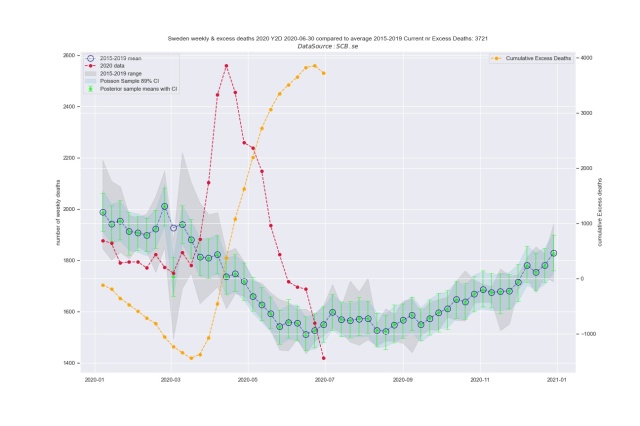
The red curve shows deaths per week, the orange curve shows cumulative Excess deaths. The blue-ish line is the average 2015-2019, and the grey shadow is the range for deaths 2015-2019.
Even if the last week or so gets updated – remember, we are looking at preliminary stat’s – it will not effect the fact that Sweden is now back to normal; already the past week was very close to average.
Let’s instead look at the data on a monthly basis, and instead of comparing to the baseline of 2015-2019, use a longer period, 1990-2019 as a baseline:
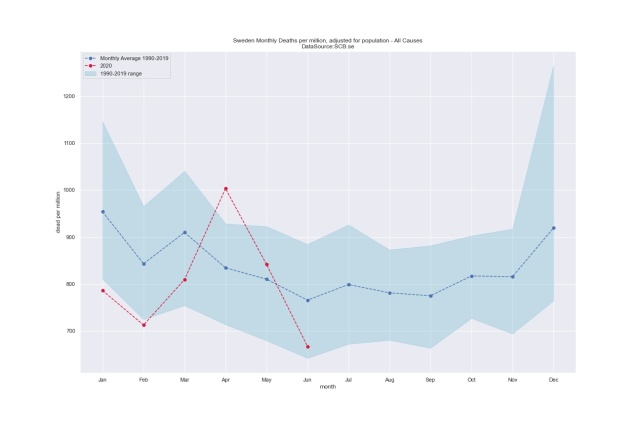
Wow….! Again, we need to be a bit careful since the data is preliminary, but still… June 2020 is way below the average of 1990-2019.
Now, let’s look at the total number of deaths for the months January – June, for the years 1990-2020, and rank them according to the number of deaths:
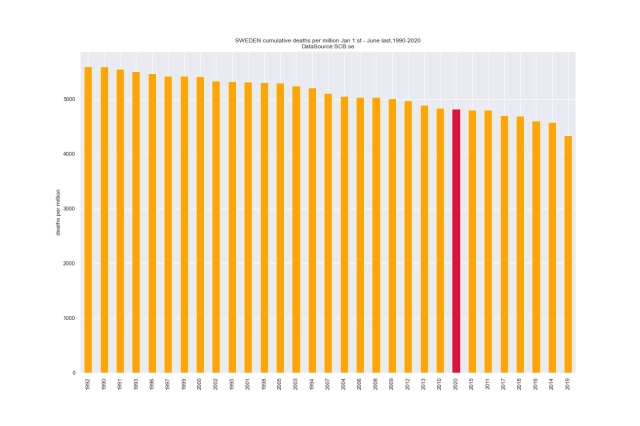
2020 thus far ranks at 24th place.
Next, let’s look at the “Top-20 Deadliest Months” over the period of 1990-2020:
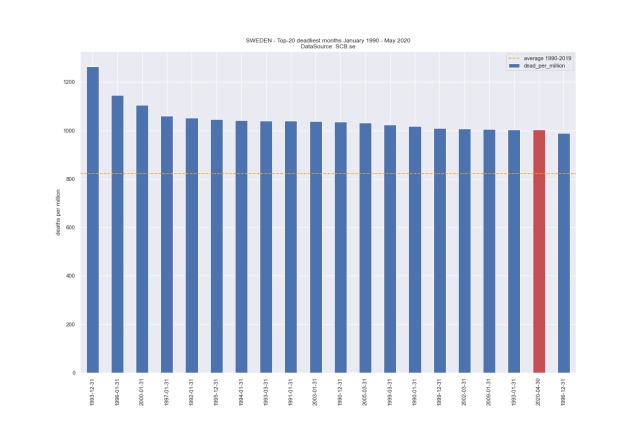
April 2020, “The deadliest month in modern times” ranks at 19th place.
And finally, let’s look at each of the years of 1990-2020, and split each year into the months of Jan-June:
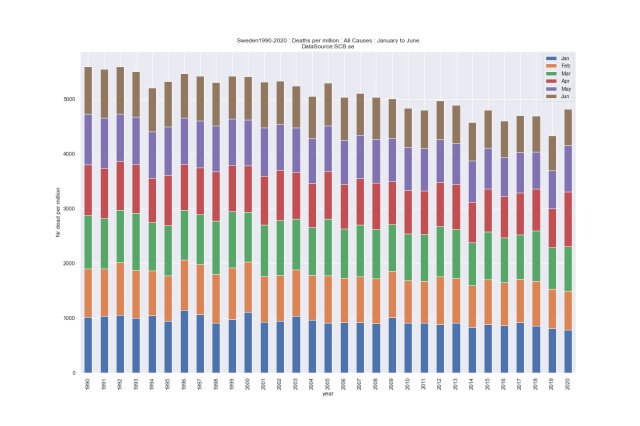
Again, keeping in mind that the data are preliminary, and the last week could be slightly adjusted… still, to me, it looks like “business as normal” now. Furthermore, I’m currently excluding those 2020-deaths that are not assigned a definite death date, that is, status “unknown day of death”, reason being to allow for tracking of daily and weekly numbers. So, the numbers used for 2020-deaths are a fraction lower than the actuals, currently about 1% less. I might at some later point add the ‘date unknown’ deaths to the data, which most likely will have a minor impact, putting the 2020-numbers a fraction higher.
The bottom line, at least for me, is that despite all the hysteria, 2020 has been a very normal year in terms of deaths. I’m very much looking forward to an investigation into what caused the world to overreact to this extreme level…



Do you have a url that will link to this date and charts? I can’t make out the tiny type in the graphs provided.
you can find the jpg’s at https://github.com/tolex3/share
GREAT ARTICLE! Thanks
you are welcome.
As I have written as a second comment in Twitter to this text. I think there is one weak point in you reasoning: The age standardized total mortality is significant lower now 20-30 yrs later as expected average lifetime has expanded. Cardiovascular deaths make up a little more than one third of all deaths and for example male deaths due to ischemic heart disease (myocardial infarcions aminly) have during these 20-30 yrs decreased from around 500 per 100.000 in 1990 to around 150, age standardized.
So sticking to deaths/week or manths 2015-19 for comparison would be more accurate.
Yes, thats definitely a factor that makes comparisons over longer periods tricky. I also believe there are orher factors, for eg other demographics than age, that have changed significatly over time, which are not controlled for in the model. But my purpose hete is not to have rocket science level precision for the estimates, I’m fully satisfied with a rough estimate on whether covid is the contemporary version of the spanish flu, as it is described by media, a deadly disaster, or something more like a severe flu.